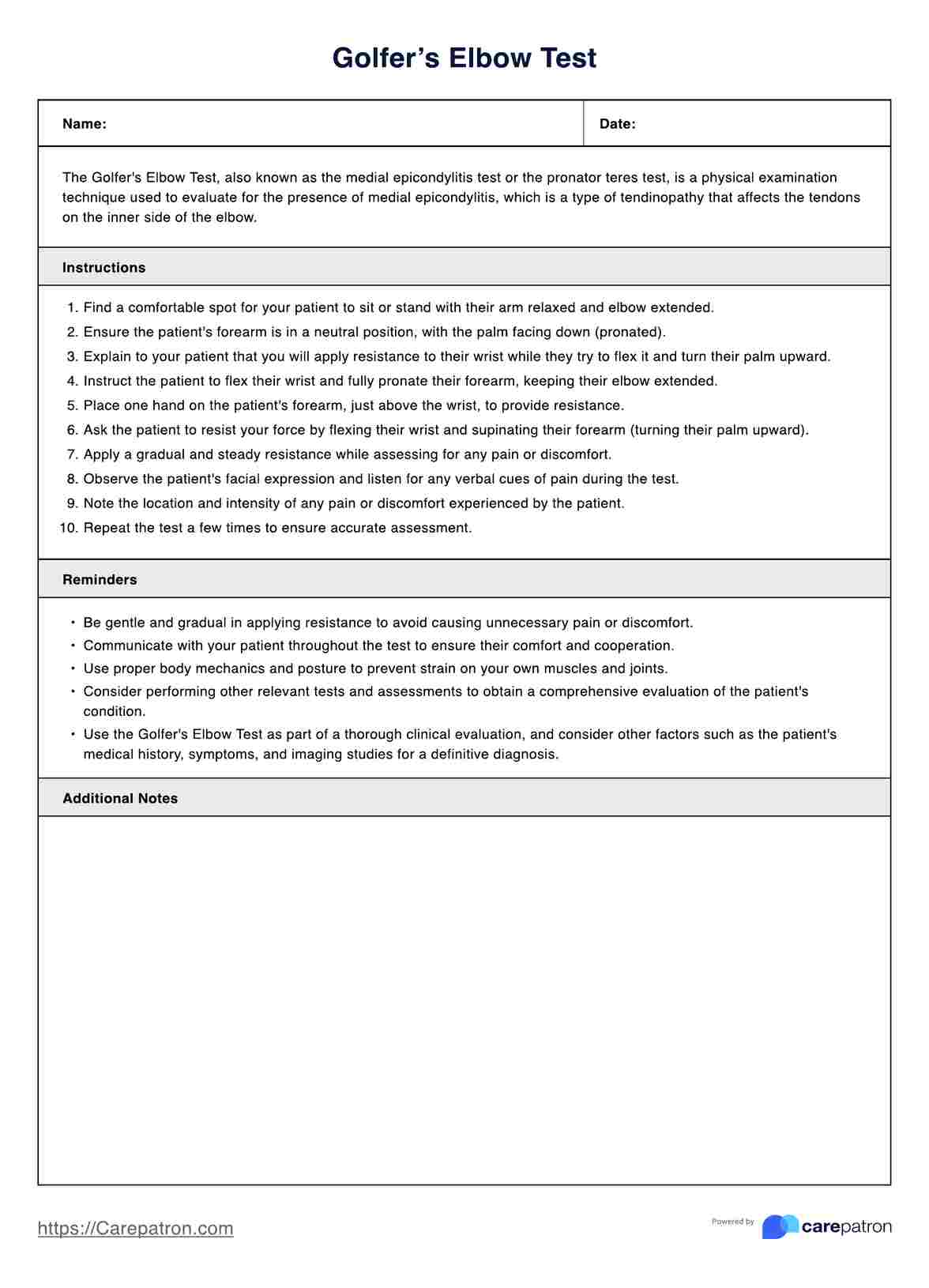The Golfer's Elbow Test is an assessment used to diagnose and treat Golfer's Elbow and other related conditions. It examines the patient's elbow joint for pain, range of motion, and signs of muscle weakness or tension. The test involves the patient performing specific movements while the doctor assesses their reactions and any muscle weakness.

Golfer’s Elbow Test
Discover how to perform a Golfer's Elbow Test using our free PDF guide and example.
Use Template
Golfer’s Elbow Test Template
Commonly asked questions
The Golfer's Elbow Test provides medical professionals with a quick and accurate way to evaluate the severity of pain and range of motion in the elbow joint. This can be very helpful in determining the best course of treatment, such as medications, physical therapy, or surgery.
The Golfer's Elbow Test measures the elbow joint's range of motion and stability. It also checks for pain, muscle weakness, or tension that may be present.
EHR and practice management software
Get started for free
*No credit card required
Free
$0/usd
Unlimited clients
Telehealth
1GB of storage
Client portal text
Automated billing and online payments











